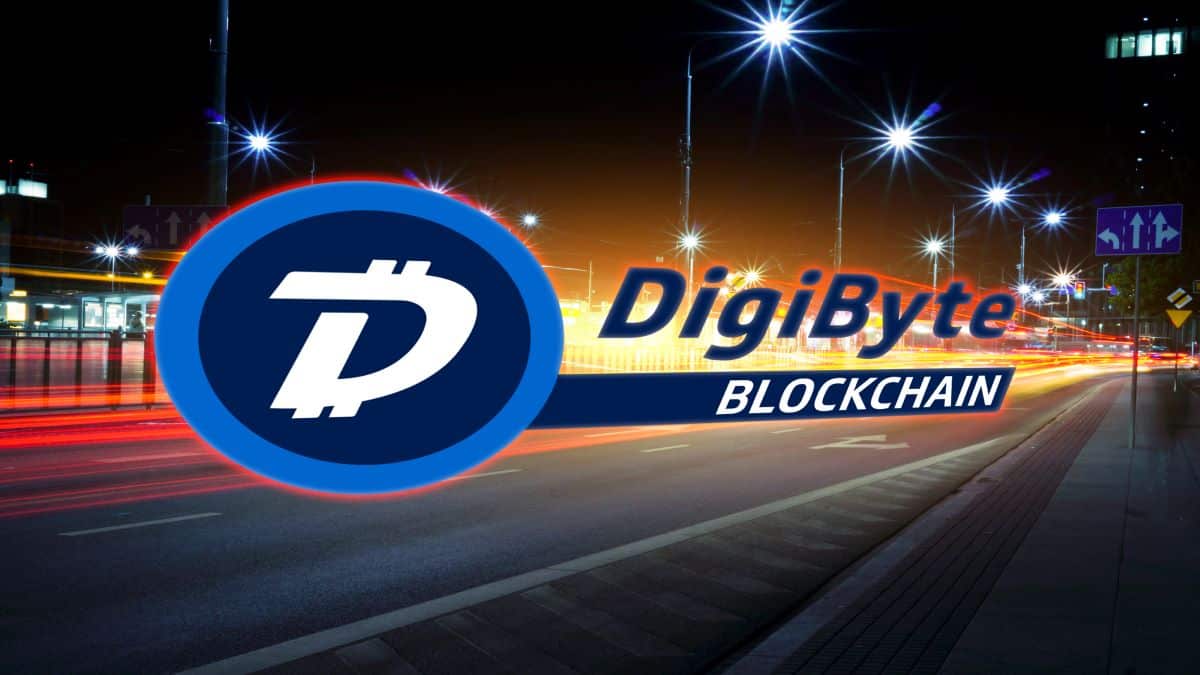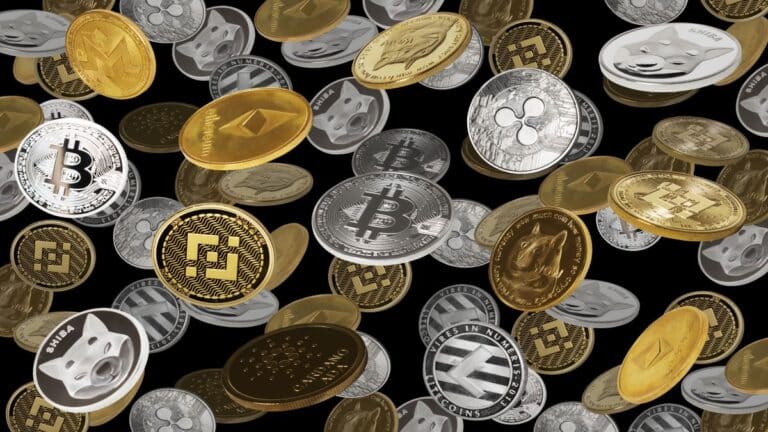DigiByte 2024: Learn About This Amazing Blockchain Now

DigiByte is a blockchain project like Bitcoin, but it is quicker, more secure, and more innovative. It enables instantaneous cross-border fund transfers without the use of intermediaries like banks.
DigiByte is a finite currency, unlike dollars, euros, pounds, etc. By 2035, there will only be 21 billion in circulation, and no additional coins will be created.
It is a decentralized system because it cannot be controlled, attacked, or brought down at any single or central point of failure.
It is also a permissionless system. To use, send, or receive DigiByte transactions, you do not need anyone’s authorization.
DigiByte may store data, authenticate papers, log into websites, and even secure medical information.
DigiByte History
Jared Tate, the founder of DigiByte, has been working on the Bitcoin project since 2012 and chose to create the DigiByte blockchain in 2013 to address what he saw as Bitcoin’s shortcomings.
He started working on the DigiByte project around October 2013. On January 10th 2014, the DigiByte blockchain was formally launched following the successful mining of the first block.
Since then, the DigiByte blockchain has led the cryptocurrency industry in terms of usability and cutting-edge platforms, such as Digi-ID, SegWit, DigiSpeed, MultiAlgo, and so on, thanks to the assistance of volunteers from the DigiByte community, although it is still relatively unknown.
Unique Features of DigiByte
DigiByte is now among the most secure, fast, and decentralized UTXO blockchains in use thanks to its unique features, which include:
Decentralization: DigiByte is truly decentralized because it does not have a single point of failure. It is run and upgraded by volunteers and initiatives supported by the global community. Since it was never sponsored by an initial coin offering and no miner received an excessive pre-mine coin advantage, DigiByte is not led by a CEO, and no company can claim to control it.
Speed: DigiByte only takes fifteen seconds to generate a block, making it a record forty times faster than the formidable Bitcoin. Also, early implementations and blockchain rigidity permit an on-chain transaction rate of roughly 1066 transactions per second.
Security: DigiByte uses five cryptographic algorithms with real-time difficulty adjustments to encrypt its data and protect it from hostile attackers, the government, and other parties. One of the algorithms, called Odocrypt, mutates itself every 10 days to fight ASICs and avoid harmful mining centralization and hash volatility.
Futuristic: With ground-breaking novel solutions and changes like MultiAlgo mining, DigiShield protection, the Odocrypt algorithm, Segwit implementation, and others, it is exhibiting leadership in the blockchain industry.
Operational Basis of DigiByte
The three-layered hierarchical solution demonstrates DigiByte blockchain’s creative leadership. It uses the network infrastructure, communication, and security to function at cutting-edge speed.
Applications
The DigiAssets protocol is used to implement several types of digital assets and runs on the DigiByte blockchain application layer platform.
The characteristics of this top layer:
Functions as a DigiByte platform for creating decentralized applications (dApps);
Functions as an app store with practical applications; and
It provides a place where smart contract programs that use DigiByte’s blockchain capabilities can be implemented.
Digital Asset or Public Ledger
Digital Asset is the middle or second layer. It manages administration and security using the five PoW (proof of work) algorithms. The following administrative and security steps are put in place to make sure that fresh DigiByte’s exclusively come from mining:
- By creating a Digital Byte with an intrinsic value that cannot be mutated.
- By creating an immutable record book (known as a public ledger) for recording all transactions of DigiByte.
Core Protocol or Global Network
The bottom layer handles daily operations and communications. This layer’s fundamental protocol establishes the guidelines for transaction transmission between nodes linked to the DigiByte network, including servers, computers, tablets, and other devices.
DigiByte Currency
DigiByte(DGB) is a peer-to-peer digital currency with extremely high scalability and low transaction costs. It is the best way to make digital payments.
Key Features of DigiByte
Mineable
DigiByte coin has to be mined because it is a PoW blockchain. Scrypt, Skein, Sha256, Odocrypt, and Qubit are the five algorithms utilized for DGB mining. The network’s security and decentralization are ensured through MultiAlgo mining, allowing for the use of various hardware.
Maximum Supply
The total amount of DigiBytes (DGB) that will be entirely mined by 2035 is 21 billion. Then, the only source of income for miners will be transaction fees.
Security
Jared Tate implemented the Bitcoin blockchain security architecture and upgraded it to make every transaction secure and hidden.
Speed
As previously stated, every DigiByte transaction is confirmed in under fifteen seconds.
DigiByte Ecosystem
The considerable ecosystem that DigiByte has created around its money, DGB, is one of its most valued possessions. DGB coin can be used for literally hundreds, if not thousands, of different things, from making payments to acting as a next-generation authentication mechanism.
The DigiByte Wiki contains information about all services and exchanges that support DigiByte. We x-ray a few of them here and encourage you to look up the innumerable others in DigiByte Wiki.
Exchange
Because DigiByte is among the most widely used cryptocurrencies, it is traded on many exchanges. DigiByte is listed on Binance, ChangeAngel, Crypto.com, Coinspot, and more.
Wallets
Users can store their DGB coins outside of exchanges in many different wallets. Two DigiByte wallets can be used: hardware wallet and software wallet.
A hardware wallet is the most reliable DigiByte wallet holding. Hardware wallets or cold storage wallets store users’ DigiByte assets on an external device that is not connected to the dynamic internet, thus protecting it from its risk. Examples include Ledger, Trezor, KeepKey and BitFi.
On the other hand, the software wallet is hosted online and risks losing the DGB coin to hostile actors. Examples include Trust Wallet, Guarda, Exodus, and Atomic Wallet.
DigiByte Use Cases
DigiByte is a very effective cryptocurrency designed for everyday use. DGB aims to become a genuine alternative to fiat currency by giving users valuable products.
DigiAssets
On top of the DigiByte blockchain, DigiAssets is a secure, scalable layer that enables the autonomous distribution of a digital asset, token, smart contract, digital identity, and more. It is a simplified method of producing digital content.
Key features include:
Unlimited Possibilities: Almost anything may be digitalized and imported into the DigiAssets system, including traditional financial assets like stocks and bonds, legal documents, and other types of documentation.
Teaming Application: There are already interested parties building systems in real estate, banking, remittance, identification, point of sale, motorsports, commerce, healthcare, distribution network, government, and other industries using DigiAssets as an ecosystem and framework.
Unrivaled Technology: DigiAssets uses particular characteristics of a fully decentralized blockchain that are only present in a distributed blockchain like DigiByte. Due to this, DigiAssets can outperform all other platforms in terms of security, scalability, and decentralization.
Depending on the user’s demands, the crypto assets produced by DigiAssets can be mutable or immutable. Additionally, every crypto asset created using DigiAssets is immediately confirmed on the DigiByte blockchain, making it permanent and highly immune to counterfeiting.
Digi-ID
It is a security protocol that works on the DigiByte blockchain technology platform and simplifies user authentication for websites, applications, and IoT. It uses Public/private key cryptography, and Digi-ID protects both the customer and the company/service.
Key features:
No username, password, and 2fa requirement for authentication
Does not store user data, thereby making it impossible to track user
There are no fees: no maintenance cost, no subscription charges, and so on.
DigiByte Mining
Mining is the process through which fresh DigiBytes are introduced to the global network. On the blockchain, PoW, which is thought to be the safest way to guarantee security and trust, is used to carry out this operation.
To mine DigiByte, your computer must have installed GPU, ASIC, or FPGA hardware. A DigiByte wallet and specific mining tools are also required.
The five different algorithms used for DigiByte mining are SHA256, Odocrypt, Skein, Scrypt, and Qubit. Each mining algorithm works well with a particular kind of mining equipment. Nowadays, sophisticated “ASIC” miners are used nearly exclusively to mine these algorithms, and Odocrypt is excellent for mining on FPGAs.
Unlike a Bitcoin miner’s block reward, which is lowered by half every four years, a DigiByte miner’s block reward is decreased by one percent per month to maintain a constant supply curve.
DigiByte Community
DigiByte is what it is today because of the years-long efforts of thousands of volunteers from all around the world. Genuine initiative and ingenuous decentralized leadership are behind it.
In the DigiByte community, there are several communities with various goals and purposes, but they are all focused on making DigiByte the crypto of choice for everyone. Some of the communities are:
DigiByte Foundation is a non-profit organization committed to helping DigiByte and its community create and uphold a sustainable decentralized world and safeguard and advance fundamental decentralization ideals.
DigiByte Awareness Team: Committed to taking DigiByte to the general world through awareness creation, education, social media, and marketing activities.
DigiByte Developers: Developers contribute to enhancing the protocol or developing solutions.
You can join the community by following the DigiByte community across all social media platforms and their Telegram group.
Conclusion
Concerning blockchain technology, DigiByte is a cutting-edge platform that serves different purposes in addition to serving as a digital currency.
FAQ
Who is the DigiByte founder?
The DigiByte founder is Jared Tate.
What is the market capitalization of DigiByte?
DigiByte’s market capitalization right now is USD 127.91M.
What is the circulating supply of Digi Byte?
The circulating supply of DigiByte is 15.896B.
What is a blockchain explorer?
Blockchain explorer is a software that displays DigiByte block transactions and analytics related to the blockchain network (e.g., fees, average transaction, block size, hash rates, block difficulty).
Where can I get the most recent data for the DigiByte blockchain explorer?
The most recent information on blockchain data for Digi Byte may be found at www.digibyteblockexplorer.com.
What exactly is DGB market data in any crypto Exchange?
Below is DGB market data at Binance, a global crypto exchange at the time of this post:
Volume (during 24 hours): $3.52M
Market cap: $127.91 million
Circulating Supply: 15.89B
Which organization is responsible for DigiByte development?
It depends on the actions taken by members of its community like the DigiByte Awareness Team and formal organizations like DigiAssetX, DigiByte Alliance, DigiCorp Labs, and the DigiByte Foundation for its development, acceptance, marketing, and practical use cases.
Ammar has started several online businesses and is a blogger who loves providing quality content to help others. He is involved with affiliate marketing, domain names, NFTs, and cryptocurrencies. Check out my blog if you want to learn more about these areas and business in general.






